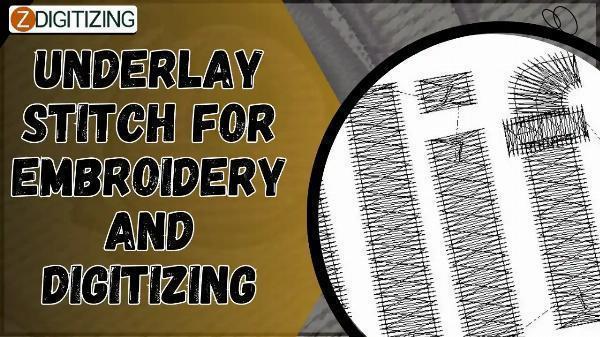 Local SEO Boost – Put Your Business on the Local Map!
Local SEO Boost – Put Your Business on the Local Map!
The Impact of Technology on Embroidery Digitizing
Written by zdigitizinga » Updated on: June 17th, 2025

Embroidery has always been a craft that combines creativity with precision. However, the advent of technology has revolutionized this age-old art, particularly through embroidery digitizing. This process involves converting artwork into a digital file that embroidery machines can read and stitch onto fabric. The impact of technology on embroidery digitizing services is profound, making the process faster, more efficient, and more accessible than ever before. In this article, we'll explore how technology has transformed embroidery digitizing and its implications for the industry.
Evolution of Embroidery Digitizing Technology
1. Early Days of Manual Digitizing
In the past, embroidery digitizing was a labor-intensive manual process. Skilled artisans had to painstakingly map out each stitch by hand, a task that required precision and considerable time.
2. Introduction of Computer-Aided Design (CAD) Systems
The introduction of CAD systems marked a significant leap forward. These systems allowed for more accurate and efficient design mapping, reducing the time required for digitizing complex patterns.
3. Advanced Digitizing Software
Modern digitizing software has brought about a new era of precision and creativity. Programs like Wilcom, Hatch, and Pulse offer a range of tools that simplify the digitizing process while providing greater control over the final output.
Key Technological Advances in Embroidery Digitizing
1. Automation and AI Integration
Automation and AI have streamlined the digitizing process, enabling faster conversion of designs into embroidery files. AI algorithms can predict and optimize stitch patterns, resulting in more accurate and aesthetically pleasing embroidery.
2. High-Resolution Scanning and Imaging
High-resolution scanners and imaging technology allow for detailed and precise digitization of designs. This ensures that even the smallest details are captured and reproduced accurately.
3. Cloud-Based Solutions
Cloud-based digitizing solutions provide flexibility and accessibility. Designers can work from anywhere, collaborate in real-time, and store their designs securely online.
4. Machine Learning and Predictive Analytics
Machine learning and predictive analytics enhance the quality and efficiency of embroidery digitizing. These technologies analyze past designs to predict and prevent potential issues in new projects, improving overall quality.
Benefits of Technological Advancements in Embroidery Digitizing
1. Increased Efficiency
Technology has drastically reduced the time required for digitizing designs. What once took days can now be accomplished in a matter of hours or even minutes.
2. Enhanced Precision and Quality
Advanced software and high-resolution imaging ensure that designs are digitized with impeccable accuracy, resulting in high-quality embroidery that faithfully represents the original artwork.
3. Cost-Effectiveness
Automation and efficient workflows reduce labor costs, making professional embroidery digitizing more affordable for businesses and individuals.
4. Greater Creativity and Customization
Technological tools provide designers with a vast array of options for customization, allowing for greater creativity and unique, personalized designs.
Impact on Embroidery Digitizing Services
1. Expansion of Services
Technological advancements have enabled digitizing embroidery service to expand their offerings. From simple logos to intricate designs, service providers can cater to a wider range of client needs.
2. Improved Client Satisfaction
With faster turnaround times and higher-quality outputs, clients are more satisfied with the results, leading to increased repeat business and positive word-of-mouth.
3. Global Reach
Cloud-based solutions and digital communication tools allow embroidery digitizing services to reach a global audience. Clients from anywhere in the world can access professional digitizing services with ease.
4. Competitive Edge
Service providers who embrace technology gain a competitive edge by offering superior services, faster delivery, and innovative solutions.
Challenges and Solutions in Technological Integration
1. Learning Curve
Adopting new technology often comes with a learning curve. Training and continuous education are essential to ensure that staff can effectively use advanced digitizing tools.
2. Initial Investment
The cost of acquiring advanced software and equipment can be high. However, the long-term benefits of increased efficiency and quality often outweigh the initial investment.
3. Maintaining Quality Control
As technology accelerates the digitizing process, maintaining stringent quality control is crucial to ensure that the final product meets client expectations.
Future Trends in Embroidery Digitizing Technology
1. Artificial Intelligence and Machine Learning
AI and machine learning will continue to evolve, offering even more sophisticated tools for design optimization and error prevention.
2. Virtual and Augmented Reality
Virtual and augmented reality could provide immersive design experiences, allowing clients to visualize and interact with their designs before they are digitized and embroidered.
3. Sustainability and Eco-Friendly Solutions
Technological advancements will likely focus on sustainability, with eco-friendly materials and processes becoming more prevalent in the embroidery industry.
4. Integration with E-Commerce Platforms
Seamless integration with e-commerce platforms will streamline the ordering process, making it easier for clients to request and receive custom embroidery digitizing services.
Conclusion
The impact of technology on digitizing services for embroidery is undeniable. From increased efficiency and precision to expanded service offerings and global reach, technology has revolutionized the way embroidery designs are created and executed. As the industry continues to evolve, embracing these technological advancements will be key to staying competitive and meeting the ever-changing needs of clients. The future of embroidery digitizing is bright, with endless possibilities for innovation and creativity.
FAQs
1. What are the main benefits of using advanced digitizing software for embroidery?
Advanced digitizing software offers increased efficiency, enhanced precision, cost-effectiveness, and greater creativity in design customization.
2. How has AI impacted embroidery digitizing services?
AI has streamlined the digitizing process, improved design accuracy, and enabled predictive analytics to prevent potential issues, enhancing overall quality.
3. What are the challenges of integrating technology into embroidery digitizing?
Challenges include the learning curve for new tools, initial investment costs, and maintaining quality control during accelerated processes.
4. How do cloud-based solutions benefit embroidery digitizing services?
Cloud-based solutions provide flexibility, real-time collaboration, secure storage, and global accessibility for designers and clients.
5. What future trends can we expect in embroidery digitizing technology?
Future trends include further advancements in AI and machine learning, virtual and augmented reality, sustainable solutions, and integration with e-commerce platforms.
Note: IndiBlogHub features both user-submitted and editorial content. We do not verify third-party contributions. Read our Disclaimer and Privacy Policyfor details.
Copyright © 2019-2025 IndiBlogHub.com. All rights reserved. Hosted on DigitalOcean for fast, reliable performance.












